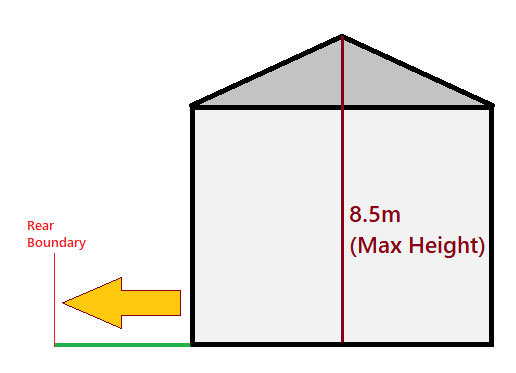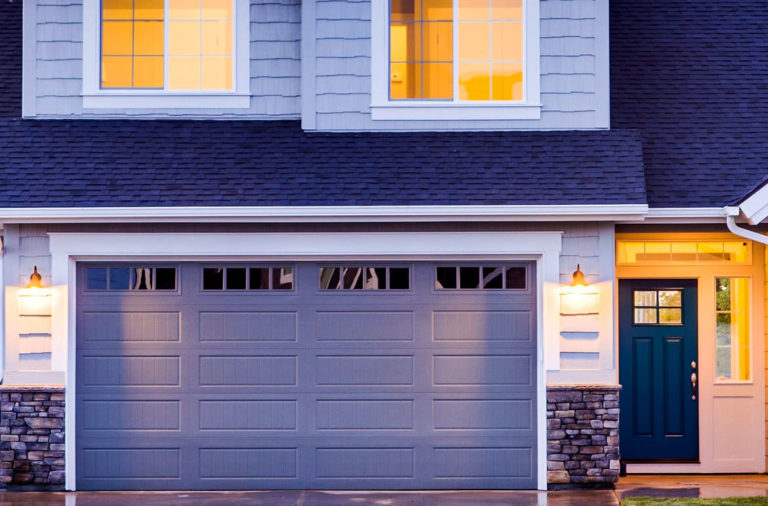
When planning to build a granny flat, making the maximum use of height allowed is an important factor – so you may have wondered, what is the maximum height a granny flat can be?
The maximum height a granny flat can be is 8.5m. However, once the height begins exceeding 3.8m, this has an impact on the rear and side setbacks for your dwelling. This too depends on, among other things, the size of your block and the total building height. The regulations can also depend on your local council, who may have varying rules locally.
Today I will discuss in detail these height limits and what setbacks this means for your granny flat.
DON'T PAY A FORTUNE FOR YOUR GRANNY FLAT. Find out how to deal with council and build a granny flat for the lowest cost possible. Learn More.
I will also talk about whether it is possible to build a granny flat above a garage. Or whether you can build a granny flat as a second storey on your house.
I will also discuss whether the primary house and granny flat height restrictions are the same. Lastly, I talk you through the roof designs that limit granny flat heights.
Heights and Setbacks for Your Granny Flat
Here, I discuss how the height restrictions may have an impact on the setbacks of your granny flat. “Building height” is the vertical distance between the existing ground level the dwellings highest point.
It may also be called the “height of building”.
It includes;
- Plant and lift overruns.
It excludes;
- Communication devices.
- Antennas.
- Satellite dishes.
- Masts.
- Flagpoles.
- Chimneys, flues, etc.

Maximum Building Height
The maximum height allowed for a granny flat is typically 8.5m, measured from the ground underneath.
However, once the height of the granny flat exceeds 3.8m, rear and side setbacks begin to increase.
These exact impact on setbacks vary in relation to;
- Your total building height.
- Your block size.
Setbacks are determined by the closest point of the boundary line from the building line.
An example of the lot size, and what side and rear setbacks are required are shown in the chart below:

Height Setbacks Chart
Of course, your secondary dwelling can be higher than 3.8m in total, as shown in the chart above.
However, once your granny flat exceeds 3.8m this impacts your setbacks, and piers will add to your height.
To calculate the regulations for rear setbacks for a block less than 650sqm, you must;
- Deduct 3.8m from the maximum height of your secondary dwelling.
- Multiply this distance by 3.
- Add 3m to this distance.
For example, if your piers are 1m high, and your granny flat alone is 4m above ground level;
- The maximum height of your granny flat is 5m high.
- So, your rear setback will be;
- 5m – 3.8m = 1.2m
- 1.2m x 3 = 3.6m
- 3.6m + 3m = 6.6m rear setback.
If you did not have piers, your rear setback would be;
- 4m – 3.8m = 0.2m
- 0.2m x 3 = 0.6m
- 0.6m + 3m = 3.6m rear setback.
So building on piers has increased the rear setback by 3m, which is quite a large distance.
Important things to note include;
When calculating the boundary line, the eaves of your building are excluded, only if;
- They are under 450mm from the boundary.
The front setback of a building needs to carry on in line with the surrounding streets;
- The granny flat must have a similar setback as its’ two closest buildings (those within 40m).
Generally, regulations also include;
- If a lot is a battle-axe lot (a block of land behind another, with access through a narrow drive), then;
- Then a lot such as this has 3 boundaries and side setbacks are applied to these, (not “rear” setbacks)
- If the lot is a corner lot, to distinguish the rear and side boundaries, you must distinguish the primary road;
- This is the road that faces the front of the main home.
- If the lot is on sloping ground, to determine setbacks, you must use the maximum building height.
Although regulations do change from council-to-council.
For example the Brisbane City Council allows the maximum height of a granny flat to be;
- 9.5m and 2-storeys in the following zones;
- Character residential (CR)
- Low density residential (LDR)
- Low–medium density residential (LMR1) (two storey mix)
- Low-medium density residential (LMR2) (two or three storey mix)
- Rural (RU)
- Rural residential (RR)
- Emerging community (EC)
- Environmental management (EM)
Although regulations include;
- Rear and side wall heights cannot exceed 7.5m.
- On a small lot, the maximum angle to the highest point of the roof top cannot be more than 30 degrees.
OR;
11.5m and 3-storeys in the below zones;
- Medium density residential zone (MDR)
- Low–medium density residential zone (LMR3) (up to three storeys)
However, their regulations include;
- Rear and side wall heights cannot be more than 9.5m.
- The maximum gradient to the highest part of the roof top cannot be over 30 degrees on a small lot.
Therefore, I suggest you contact your local council to determine your exact requirements.
Height Requirements for Buildings on Piers
Granny flats can be built on piers rather than a concrete slab. This is beneficial when, among other things, your ground is not level. Instead, it is on sloping land.
See our article “Does A Granny Flat Need to be Built on a Concrete Slab?” for further explanation.
However, you must know that building on piers does have an impact on your height requirements and setbacks. As mentioned, once a granny flat exceeds 3.8m in height, regulations begin to apply.
Granny Flats Above a Garage? Is it Possible
Yes – as long as:
- The total height of your property does not exceed 8.5m.
- The layout is compliant with all setback regulations.
Granny Flats as a Second Storey to a House. Is this Allowed?
Again, yes – as long as you meet all regulations whereby:
- The total height of your property is no bigger than 8.5m.
- The configuration complies with all setback regulations.
Your property must be larger than 450sqm. You must also have a minimum of 12m to build your granny flat. Two-storey granny flats are starting to become a lot more popular as they make good use of available space.
NOTE: Both investors and families are realising the potential of these homes. However, like single storey granny flats they are restricted to 60sqm of living area.
A way around this restriction is to build a two-storey granny flat with a double garage on the main floor. Your garage is classified as non-habitable space, so you can still have a 60sqm of living area above it.
Are Primary House and Granny Flat Restrictions the Same?
Yes – if the granny flat is built on the same ground level as the primary house.
Although, if the granny flat is built on top of another erection (i.e. a garage) the restrictions may be more lenient;
- The granny flat may actually be higher.
Roof Designs to Limit Granny Flat Height
Granny flat roof types generally come in four different designs:
- Hip Roof – This is a very common roof type.
However, its disadvantage is that;
- The regulations on heights and setbacks mean a larger rear setback is often needed due to its’ height.
- Gable Roof – This is the cheapest and easiest roof type for a granny flat.
It can have a low angle, allowing for a small rear setback, and still be aesthetically appealing.
- Single Skillion Roof – This also has a low roof angle, so can minimise the impact of the height regulations.
Angles as low as three degrees can be used with skillion roofs.
The roof-covering is always ‘Colorbond’, so not always the cheapest option, but always an attractive one.
- Double Skillion Roof – This is a modern roof type that has become more popular.
It may also have a low roof angle so will not impact your height and setback regulations.
However, it is more expensive than a single-skillion roof, as it requires a stronger mid-frame to support its’ two roofs.
But its’ benefits include windows, which allow natural light in the granny flat.
Check out a post about attached granny flats to read more about the common roof types in Australia.
Conclusion
To determine the exact regulations as to the maximum height your granny flat can be, I suggest you contact your local council. This is as regulations change from state to state.
For example in NSW the maximum height is 8.5m, whereas in QLD it varies from 9.5m to 11.5m depending on your zone. Your local council will also determine your regulations regarding setbacks.
Once your building height begins to exceed 3.8m, this will impact your rear and side setbacks.
The exact setbacks tend to vary in relation to;
- Your total building height.
- Your block size.
- If your lot is a battle-axe lot, a corner lot, or on sloping ground.
As building on piers adds to your total height, this too will have repercussions on your setbacks. Building your granny flat above a garage, or as a second storey, is permissible.
You just must abide by all regulations and ensure;
- The total height of your property does not exceed 8.5m (or the height allowed by your council).
- You comply with all setback regulations.
In regards to roof designs, a hip roof can be quite high, so can also impact height and setback regulations.
In this instance, a gable or skillion roof are better options as they have a low angle. I hope this information inspires you to start planning to build the biggest granny flat allowed.











